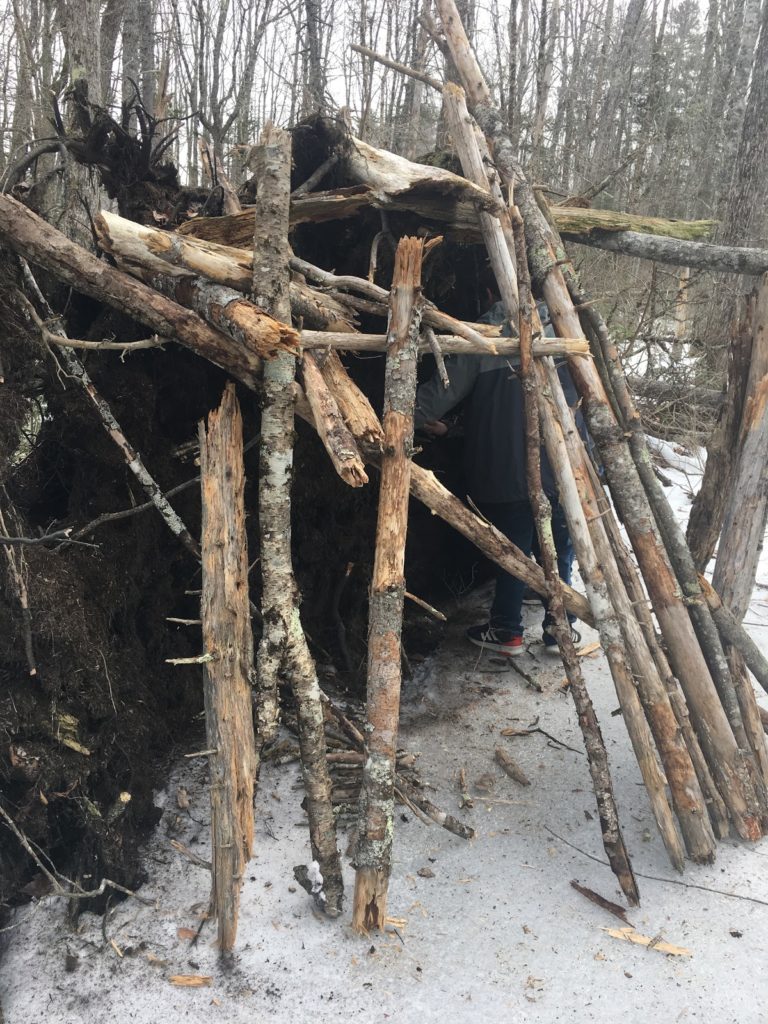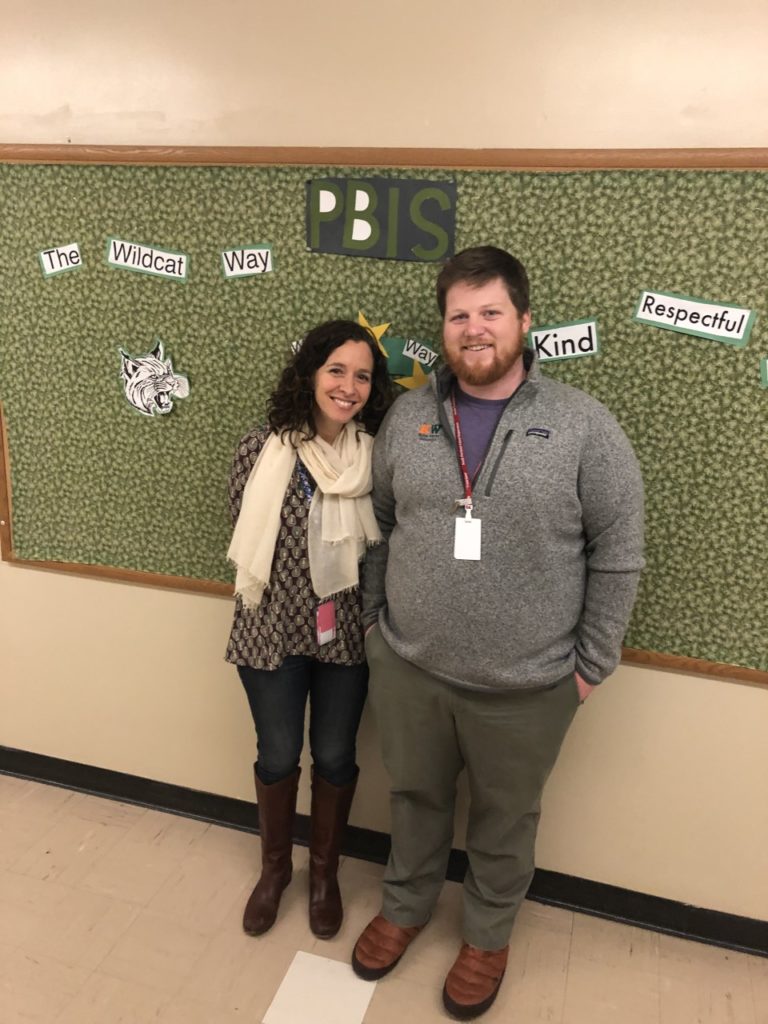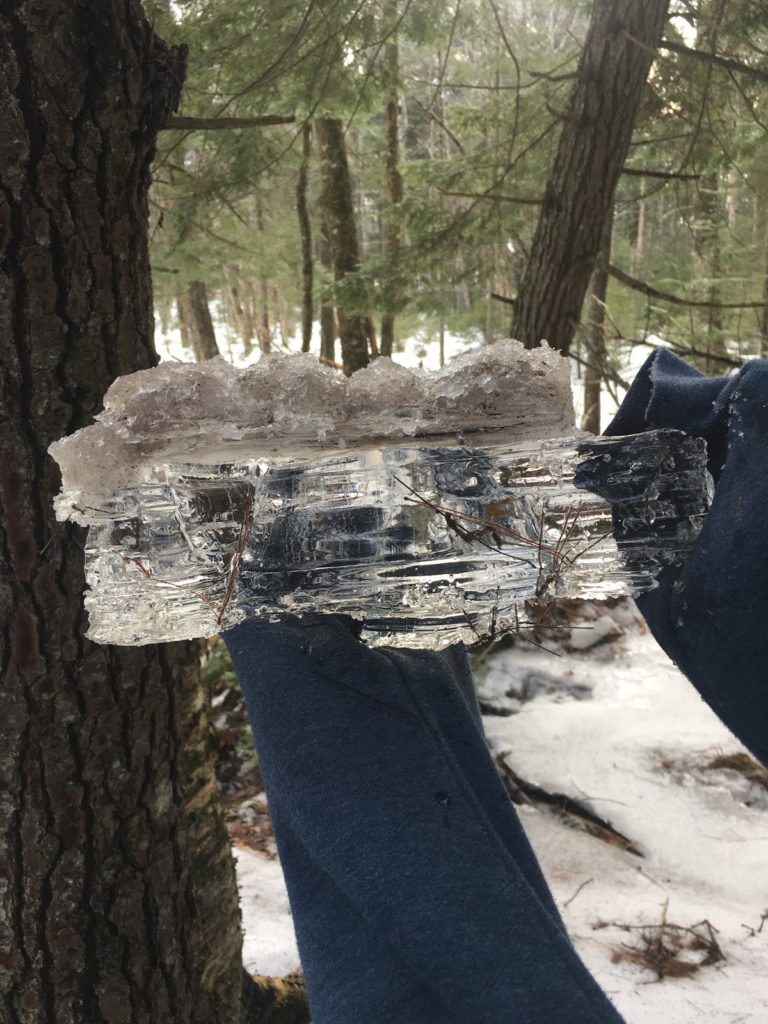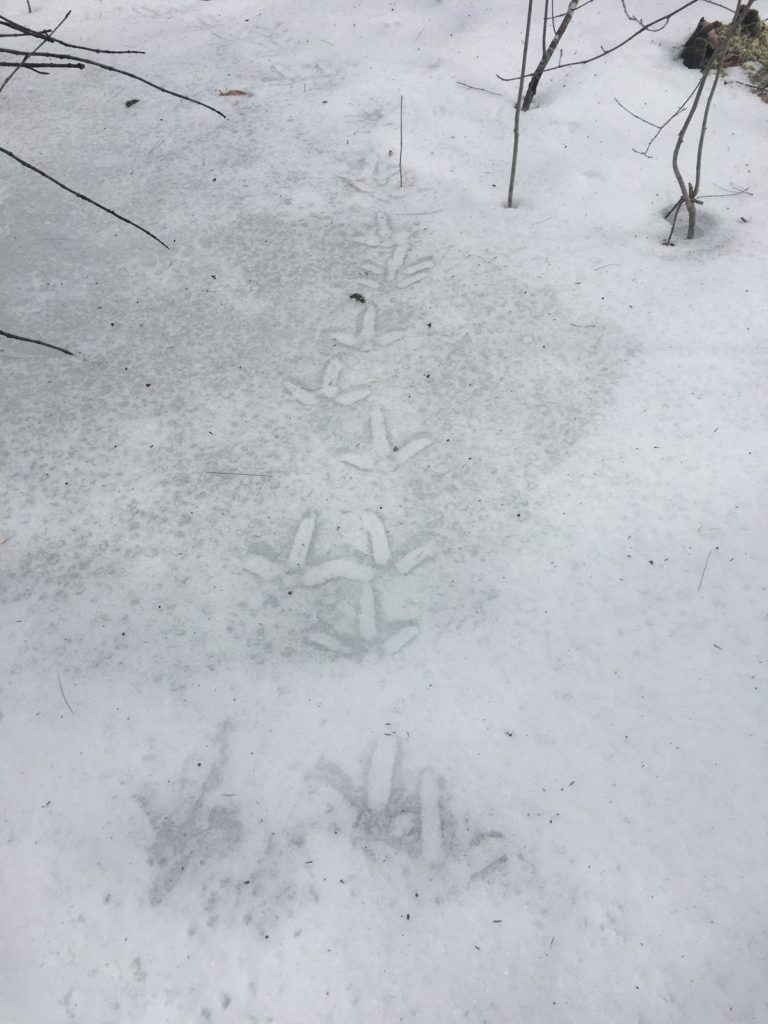Medomak’s Educator in Residence: Megan
As a first year educator at The Leadership School, I was so excited to be assigned an EIR at Medomak Middle School. In one of my first weeks in the fall, one of Medomak Middle School’s 7th grade homerooms was the first class of students I ever taught. Finding out that I would be able to continue working with this group of students throughout the winter made me extremely excited because I already knew many friendly faces with whom I would be working. The past ten weeks have been a challenge, but a challenge that has made me a better educator and one that I hope has improved the school life of many of the kids I work with. MMS has twelve homerooms, six for seventh graders and six for eighth graders. When students enter MMS as 7th graders, they are assigned to a homeroom and they keep this same homeroom until they graduate as 8th graders. They have every class in their homeroom group, and when they come to Kieve they stay in those same homerooms. Because they spend so much time in the same group, I focused a lot of energy working with the students on identifying negative group dynamics and finding positive solutions.
In my first few days at MMS, I shadowed many classes and realized that every homeroom had blocks in their schedule that were marked as Learning Labs (which are essentially a study hall). After talking with the teachers, I learned that they felt the learning labs were not used effectively by students, so I proposed to take over one learning lab per homeroom to run The Leadership School’s social and emotional curriculum. The teachers were incredibly supportive and even gave me some of their extra class time for the 8th grade homerooms who did not have any study halls. I was able to create a schedule in which I met with every homeroom once a week. Through these classes, I was able to work with nearly every student in the school. I tailored the classes to fit each individual group, but I often found common problems for many of the students. MMS students struggle to take ownership of their actions and often expect adults to find solutions for them. I spent most of my time working with groups on how to step up as leaders and how to resolve conflicts on their own. Every group had moments when they grew immensely by being able to have a serious group conversation in which they expressed how they were feeling, but they also had many challenges and often their own negativity held them back. I have loved working with these groups through the highs and lows of their classes. The students have, week by week, been working harder and engaging more in the lessons. The biggest lesson for me, however, has been that progress is not always a straight line. There are weeks when my most difficult group of students excel and my easiest group breaks down. There are weeks when i feel like we have taken three steps back. I’ve learned that, from one week to another, there isn’t always forward progress, but that doesn’t mean there hasn’t been any progress at all. Overall, I have seen my students grow into being more confident and empathetic people, but I always approach every class with the understanding that every kid and every class can have a bad day and those bad days are important for the learning process.
Aside from my homeroom groups, I also meet with a behavioral group twice a week. This group is very small and the students come and go. These students have been identified as needing higher tiered behavioral interventions, and often have an edtech working with them. They spend a lot of time working alone because being in larger groups can be a challenge. When I work with these students, I focus on fostering positive group interactions. I work with them during their lunch and fresh air time, so I always try to bring in activities that are high energy and fun. My classes with this group are vastly different from my classes with the homerooms because I am not trying to work as heavily on group discussions. Instead, I am trying to give them experiences of having fun with their peers. This may sound like a simple task, but for these students it can be very challenging. Our greatest success was building a fort together one week. We spent two days in the woods behind the school building a fort out of sticks and snow. The students were so excited about the fort that, on their own, they assigned themselves roles and worked together to build. One student was the architect (he arranged all of the sticks), while the other students searched the area around them looking for large branches. By the end, they were very proud of the fort they had built, and it was one of our few classes that caused little conflict among the students. Though this group can be a challenge for me, I have loved getting to know such a small group of students and being able to spend a great deal of time with them.

One of my favorite roles that I play at Medomak Middle School is the facilitator of the Outdoors Club. Medomak has only one late bus a week, on Monday, and it was a bit difficult to convince students to choose to participate in the Outdoors Club over any other club. However, after a few weeks, I had a small group of kids who would consistently come to the club, and Mondays have quickly become my favorite day of the week. At first, the goal of the club was to get students outside and appreciate their environment, but I realized that what my group really needed was a space where they could be goofy and chatty with their peers. Most weeks we went outside and walked the nature trails behind MMS. One day, we searched through the woods for the coolest things we could find and followed animal tracks we saw. We found two porcupines in a tree, some turkey tracks, and we crushed up a bunch of ice and searched for the weirdest shapes that it made. Other days, we played camouflage and stomped on the ice that had taken over the fields. Two of my students asked if we could spend some time in Outdoors club baking warm treats for when we came inside. Every week, we have baked something new: cookies (which were a total, hilarious disaster), brownies, pancakes, and cupcakes (which I bought in fear of repeating the cookie fiasco). On our last day of Outdoors club this week, I took five of my students to Kieve to climb at our rock wall. We had an awesome time playing music, telling stories, and pushing comfort zones while climbing. I was delighted to find that the students were incredibly supportive of one another and never needed reminding to encourage their peers and cheer each other on.
My time at MMS has been the best part of my year. I have learned so much from my students and have been motivated to keep working on my skills as an educator so that I can return next year with an even stronger program. There have been great successes and total flops throughout the process of getting to know my students this year, but in this last week I am finding that all my time with them has been worthwhile. I see my students making more of an effort in our classes together, and they are reaching out more to me when they need extra support. I am so sad to be leaving them, but so excited to know that the 8th graders will be coming to Kieve this spring!
Memorial’s Educator in Residence: Will
My name is Will Hackett and for the last five years I have had the distinct pleasure of being the Educator in Residence at Memorial Middle School in South Portland. I remember the first year of the EIR program we had six Schools, seven EIR’s, and eight weeks. None of us really knew what we were getting ourselves into, but we wanted to try and give school communities more exposure to the Kieve-Wavus Education. Through doing this we figured it would be a big win for everyone involved. A win for schools because they would be able to have a great young educator in their school to fill needs and further the KWE curriculum, a win for KWE because it would allow us to form strong relationships with school communities, and a win for the educator because it would give them new experiences and countless opportunities to grow. Seven years later, I think it is safe to say that the EIR program has done and continues to do all of those things.
Over the years, my role at Memorial has changed quite a bit. My first year in the 8 weeks that I was here, I spent a lot of time trying to really find my place and make connections in the community. I was in the English Language Learners room, meeting with kids one on one, hanging out during lunches, and generally just being present in the school. It was a great winter, but by the time I finally hit my stride it was time to return back to Kieve for the spring season of The Leadership School.
My second year at Memorial things started to change. Instead of spending the entire time trying to find where I could be useful, I was able to hit the ground running on day one and start forming positive relationships between both students and staff. In the second year at Memorial I started to discover that I had a really unique role as the EIR. I found myself in a role that allowed me to connect with students differently, because I wasn’t their teacher, I wasn’t their principal, I was the ‘Kieve guy’. My role allowed me to easily build trust with students because of their positive experiences at TLS, and with that trust I was able to have meaningful conversations with students and help them through a variety of issues that came up during the day. During this winter I began to work closely with the Principal, Assistant Principal, and Guidance office.
As my role began to evolve, I found myself continuing to form meaningful relationships with students. I was then introduced to Restorative Justice, a process that revolves around empathy and aims to restore relationships between students, staff, and the community. Over the next couple of winters, I spent less time in ELL classrooms and more time working with struggling students. I started to develop a passion for helping students process their actions and get back on track with both their teachers and peers. I found myself growing both personally and professionally more and more every day.
However, the end of the 10-week EIR period always came to fast, and before anyone was ready I would be back at Kieve for the spring TLS season. I have always said the hardest part of working TLS for me is that after five days students get on a bus and head back to school, and you rarely get to see the magical outcomes of our residential program. Similarly, leaving Memorial after 10 weeks has always been hard for me. Just when I start to see my students making progress, it’s time to leave and head back to Kieve.

While I love the KWE community, Memorial has become a second home for me over the years. I have been able to maintain some of my relationships with students into the High School and get to spend a couple of days each year going there and checking in with them. I have made lifelong friends, and had incredible mentors over the past five winters, and am so thankful for all of my experiences.
I am feeling especially blessed this year, however, because unlike most of the EIR’s who will be leaving their schools on Friday at the end of the school day, I get to stay! This year KWE is rolling out a new version of EIR which will allow educators to spend 20 weeks at their EIR school to be able to continue all of the great work they do. Knowing that I will be here until the end of the school year has allowed me to dive in headfirst to this winter and get involved in as much as possible, knowing that I don’t have to leave early!
Over the past couple of years Memorial has been working on adopting the PBIS model. PBIS is an acronym that stands for Positive Behavior Interventions and Supports. Essentially this is a three tiered support system for the community that is built on being Safe, Kind, Respectful, and Responsible. Due to my extended stay here at Memorial I have been able to really dive into PBIS, and help the school better support students in need. This year I have also had the opportunity to design and teach my own Leadership class to two sections of 7th graders. In reflecting with Rebecca Stern (Memorial’s Principal) we both agreed that none of the work I have been able to do this year with students would be possible if I had to leave at the end of 10 weeks. I feel so lucky to not have to say goodbye to Memorial this year and am looking forward to what the spring has in store for me and Memorial.
Eight years ago the Educator in Residence Program was an idea that we thought could turn into something big. There were only seven educators and six schools, now there are 21 educators in 18 different schools, all doing different amazing things. Only three of us are fortunate enough to have the incredible opportunity to spend 20 weeks in our EIR school. I can’t wait to see the successes of the EIR program in the years to come, and am so very grateful to both Kieve Wavus Education and Memorial Middle School for all of the experience and growth the EIR program has provided to me.


